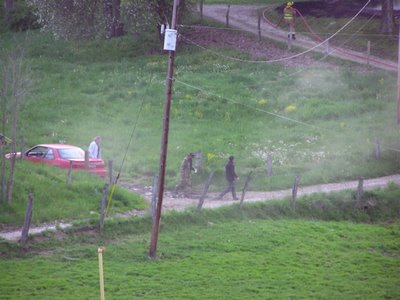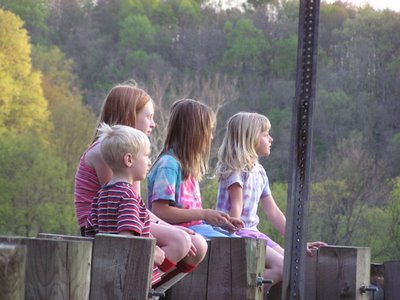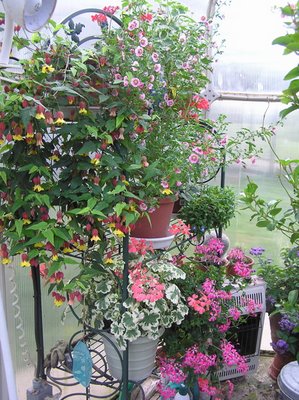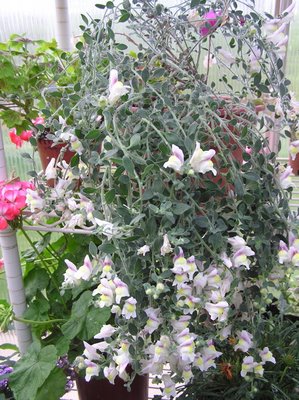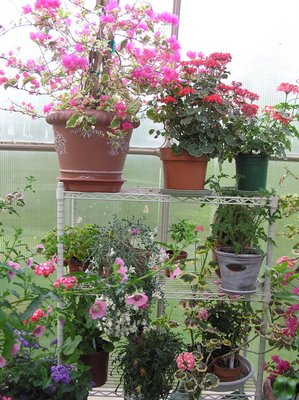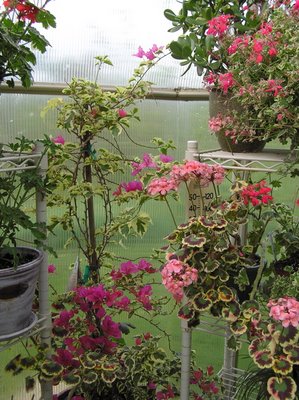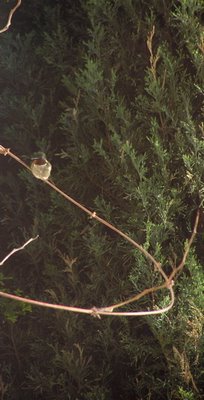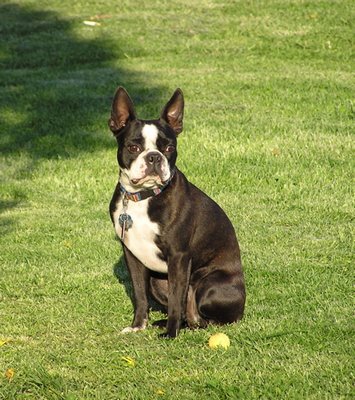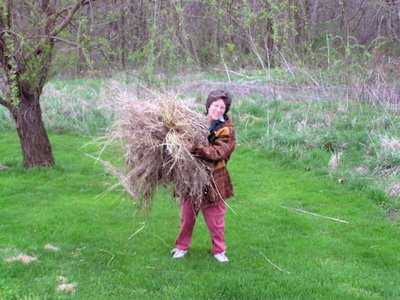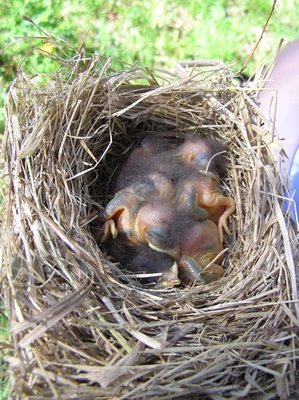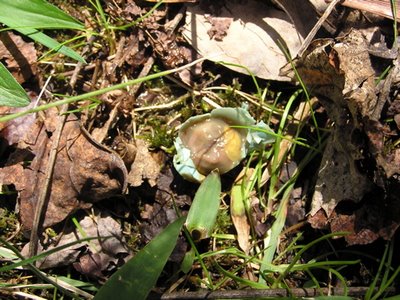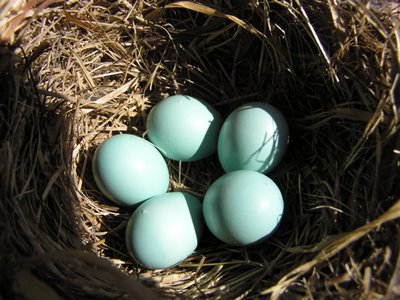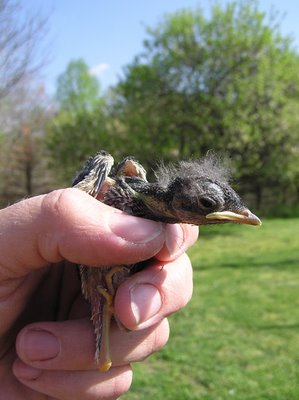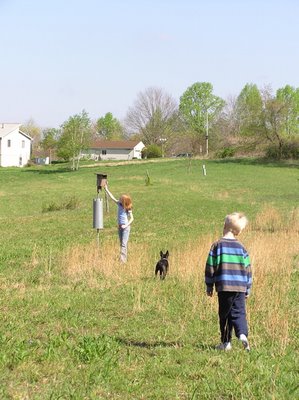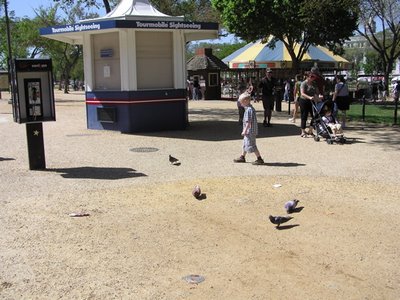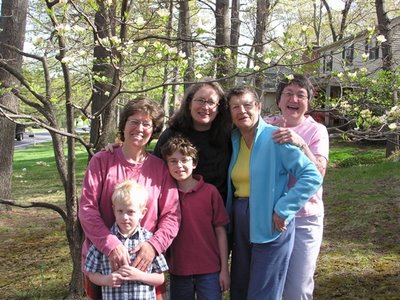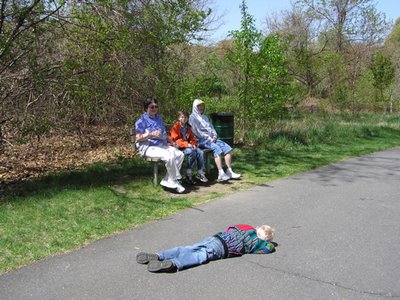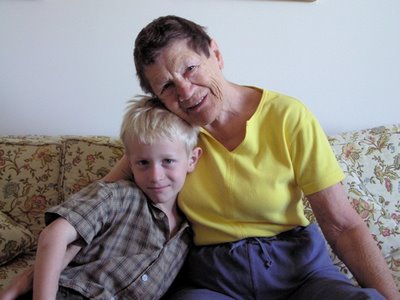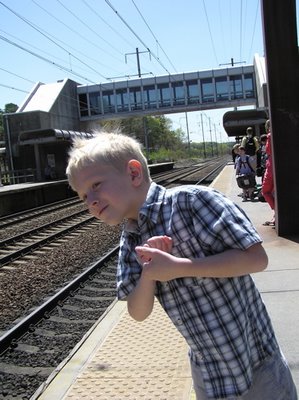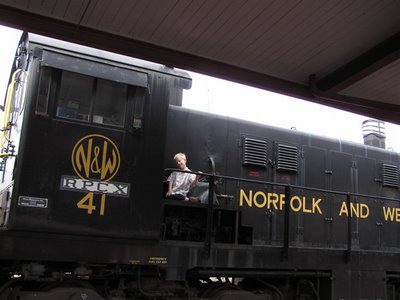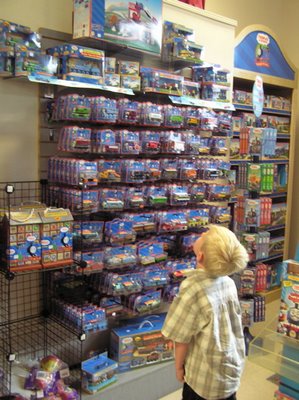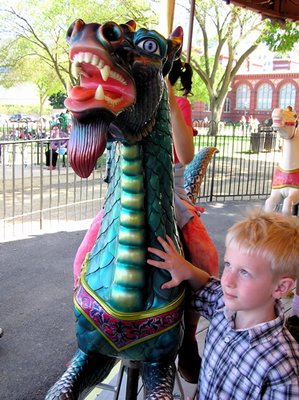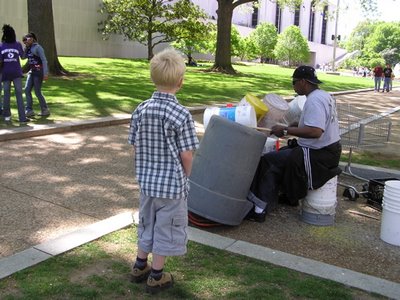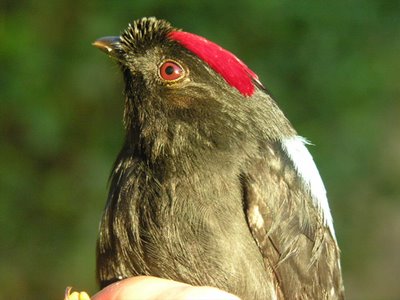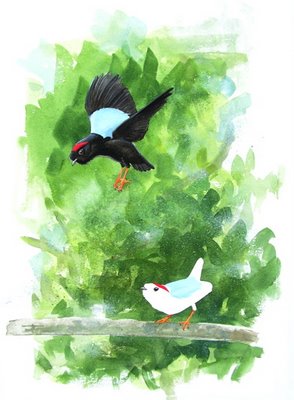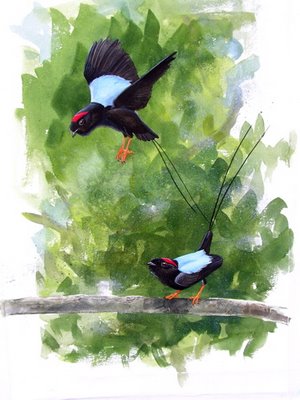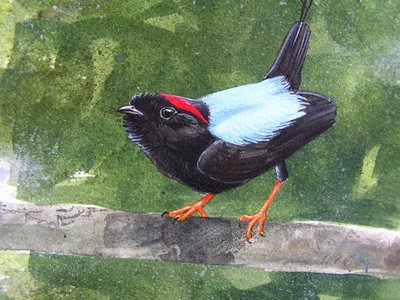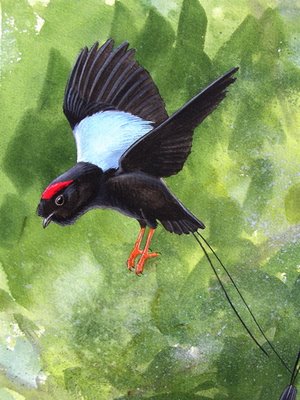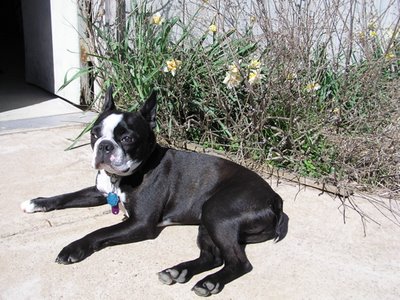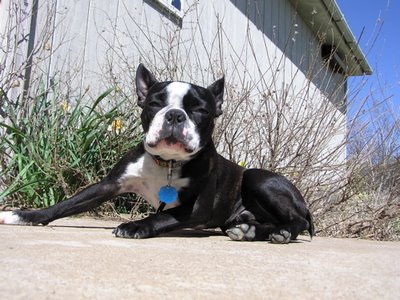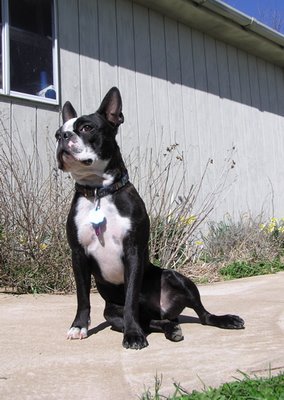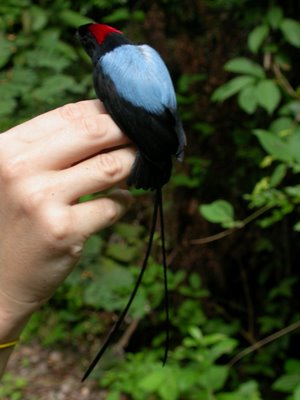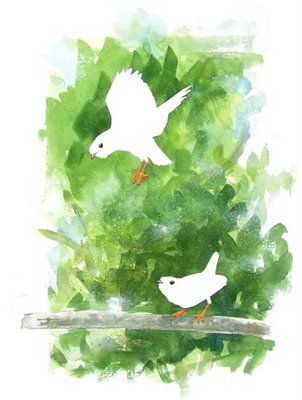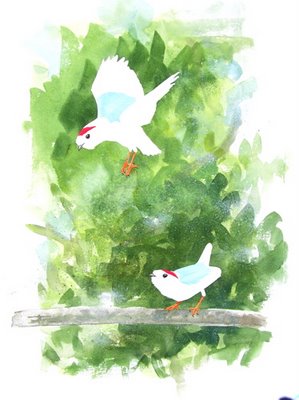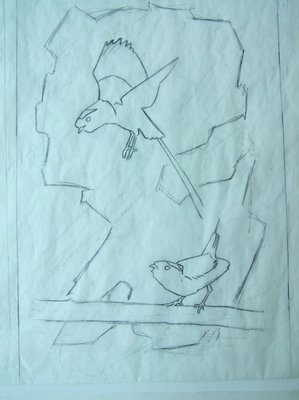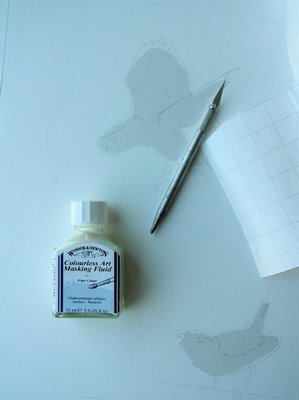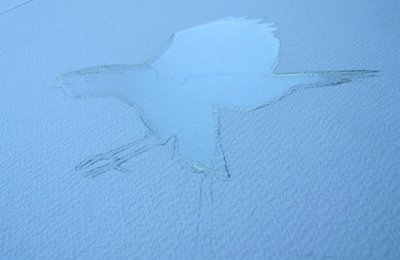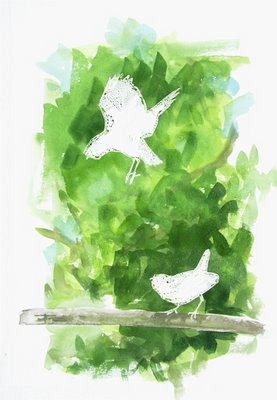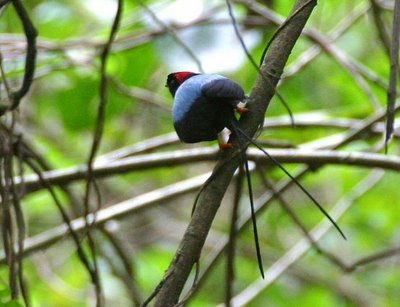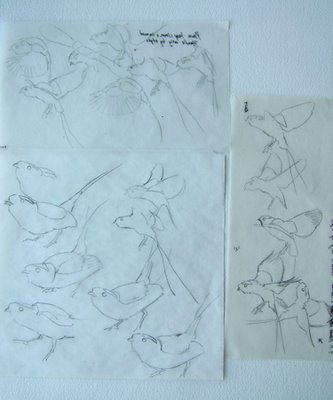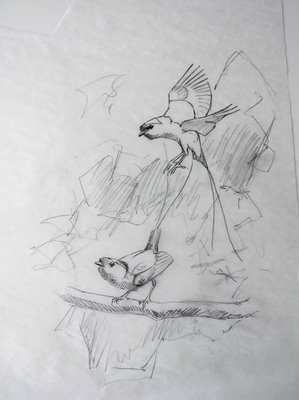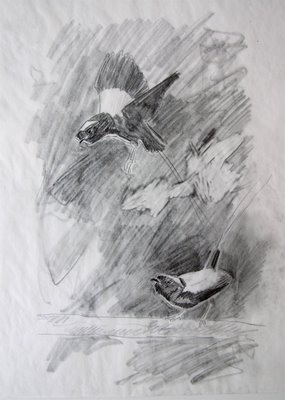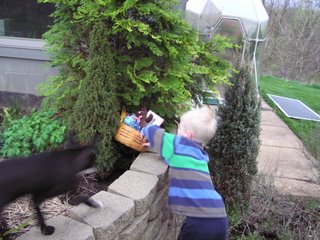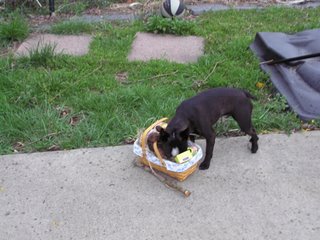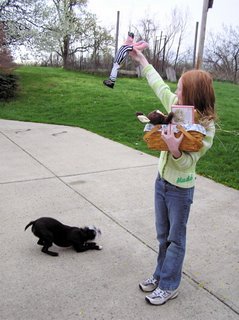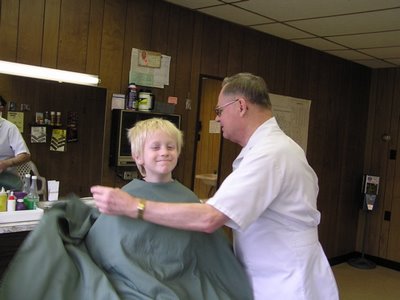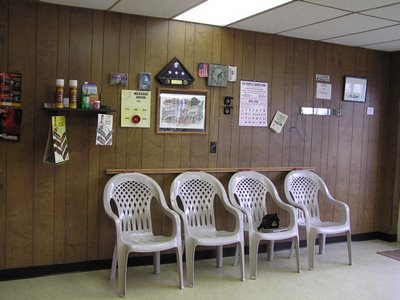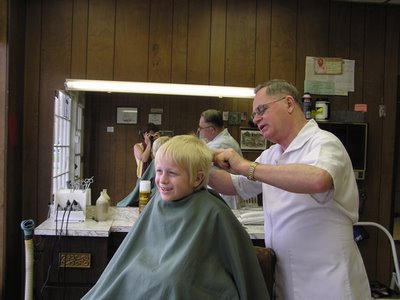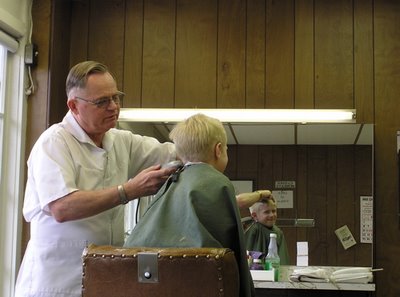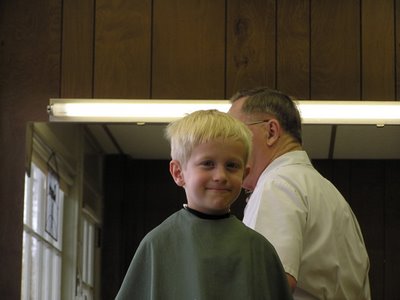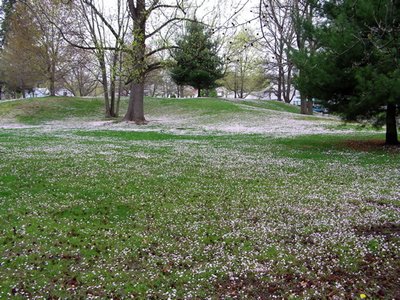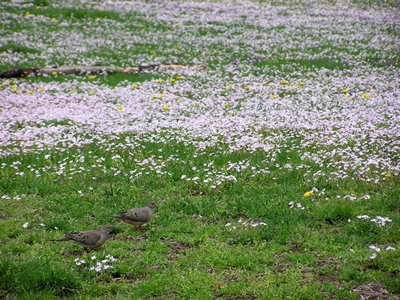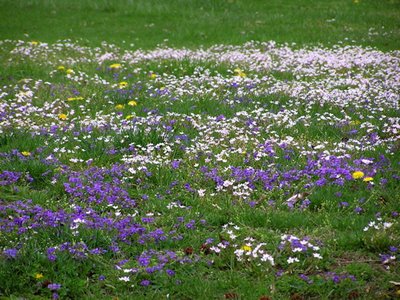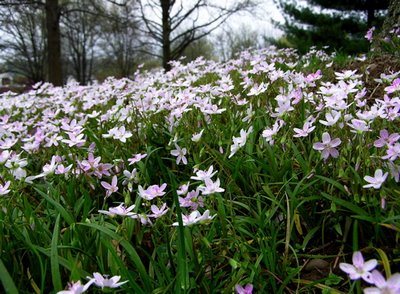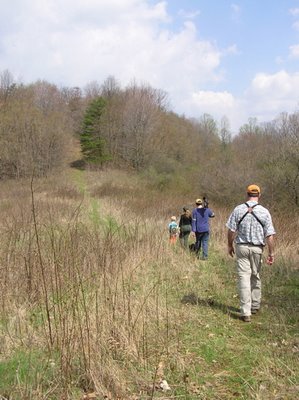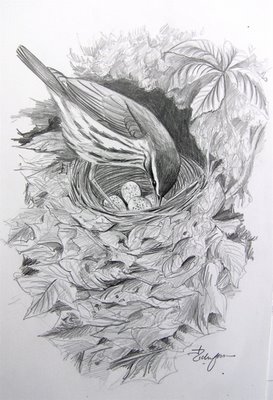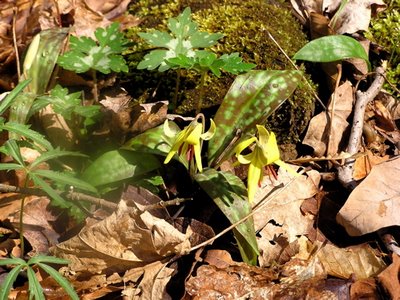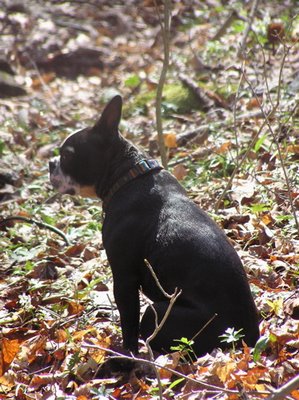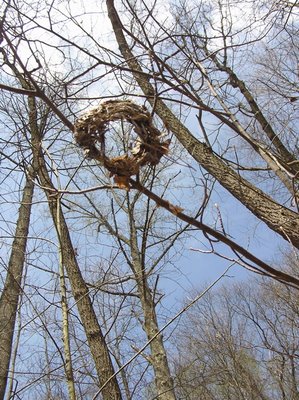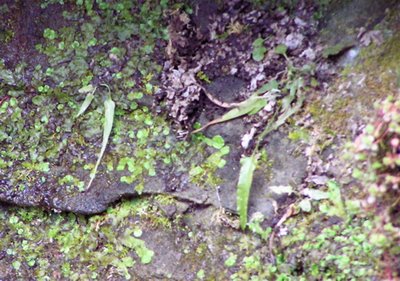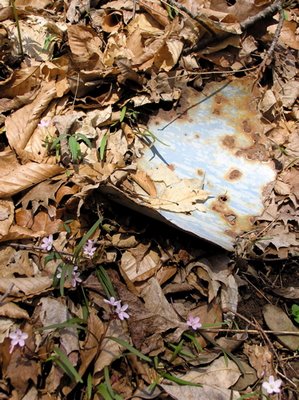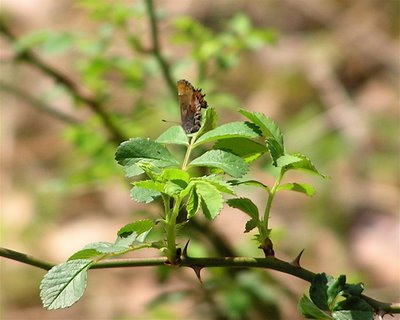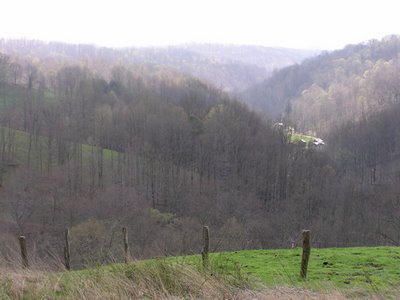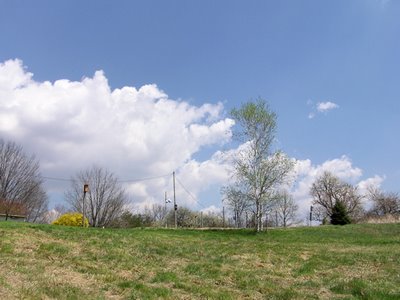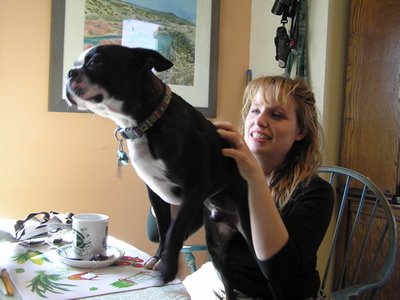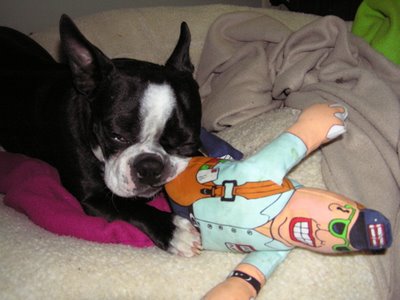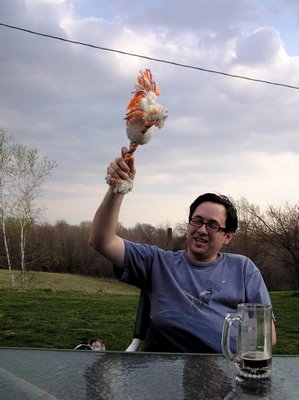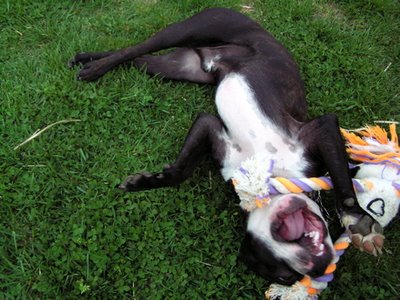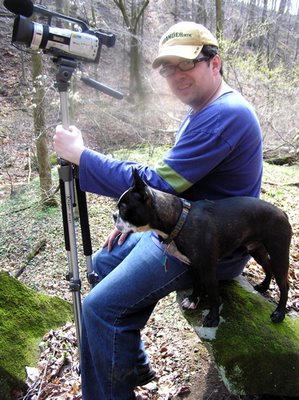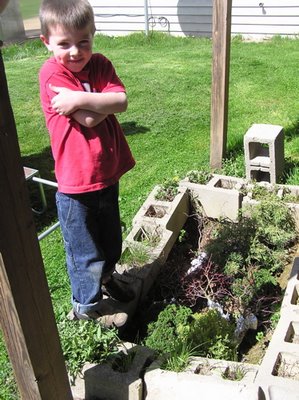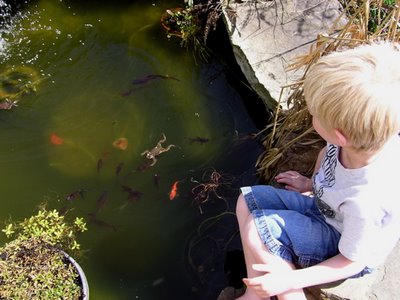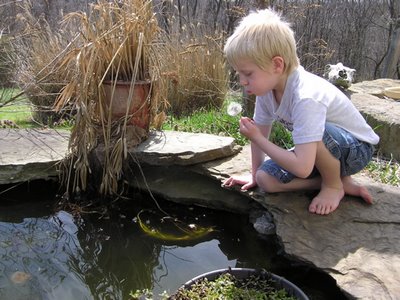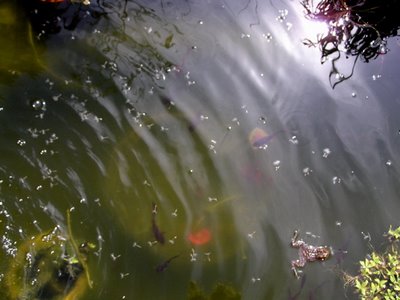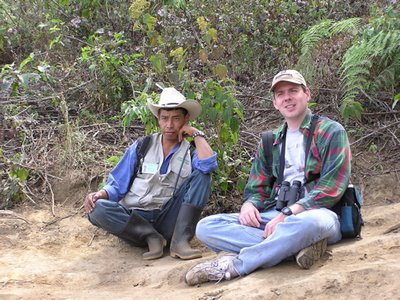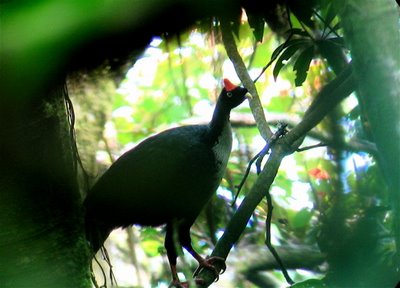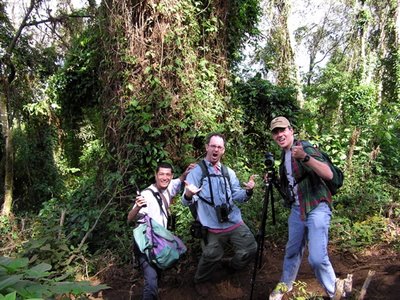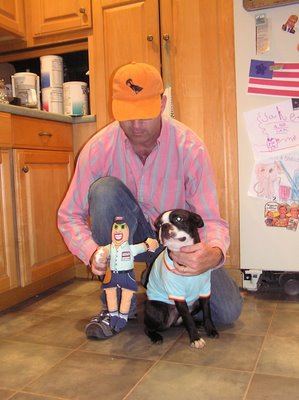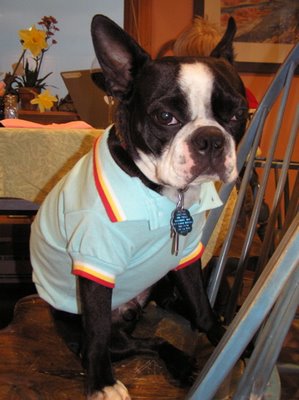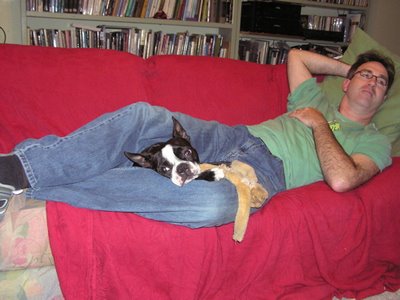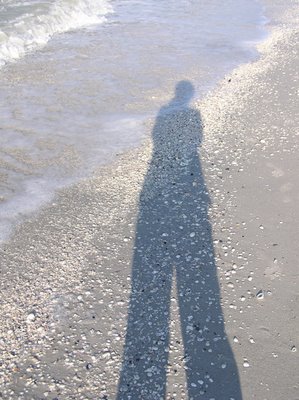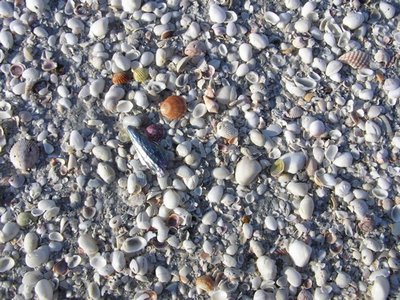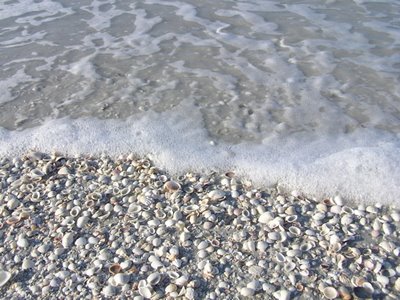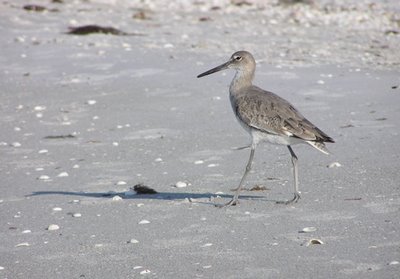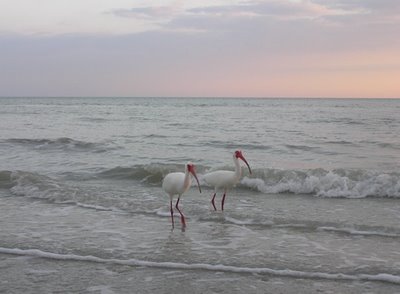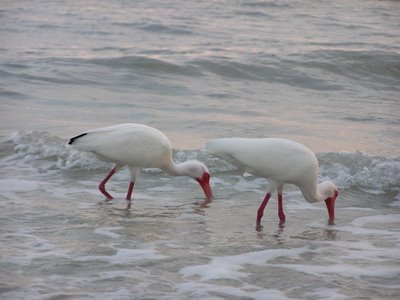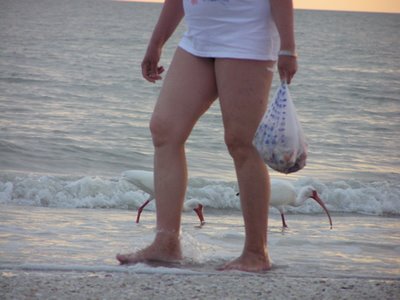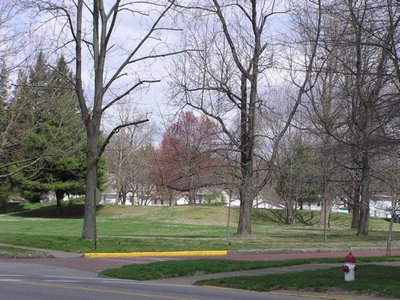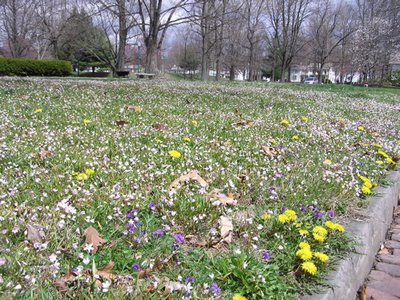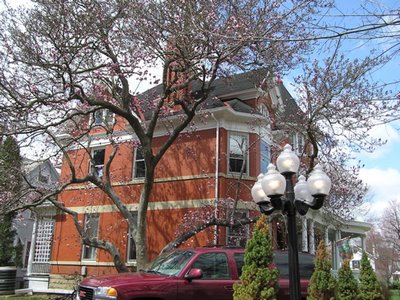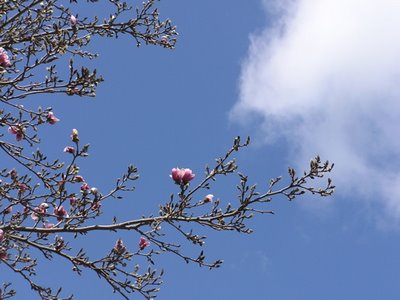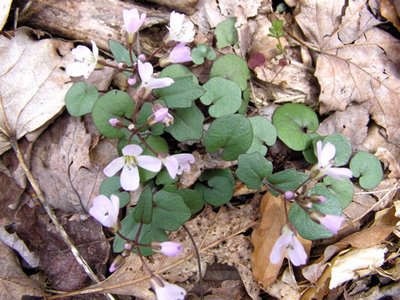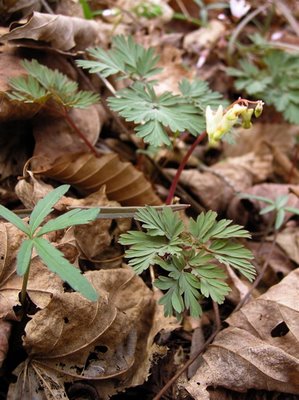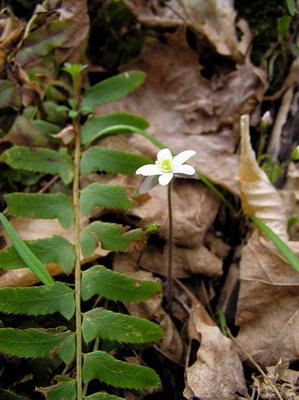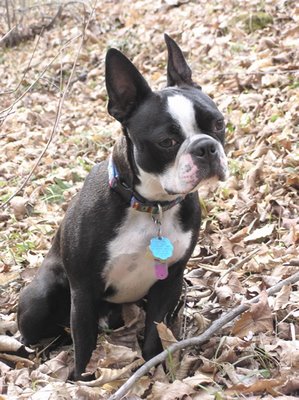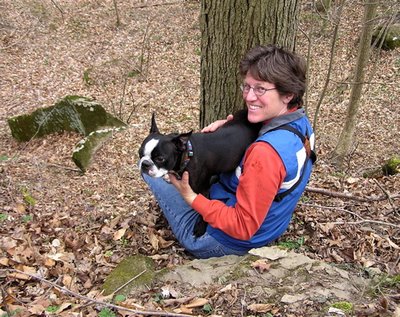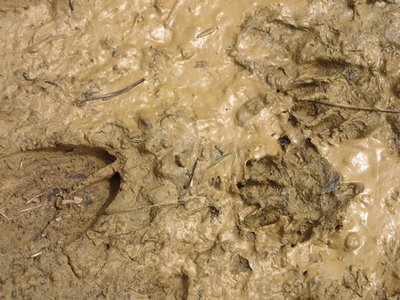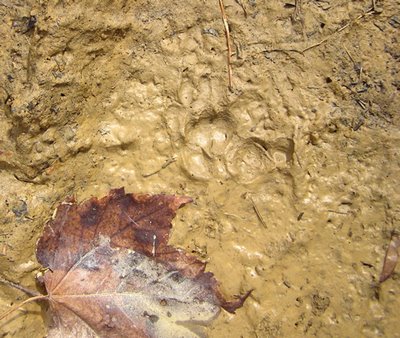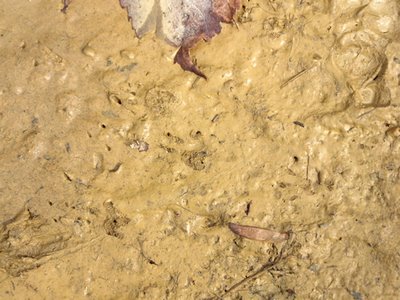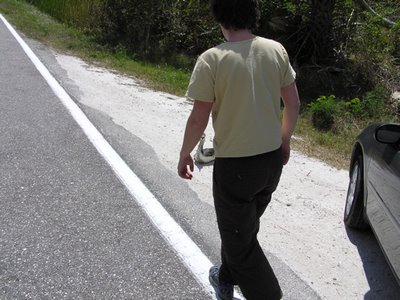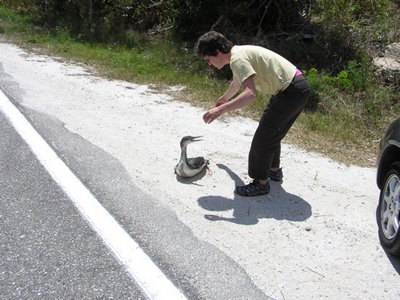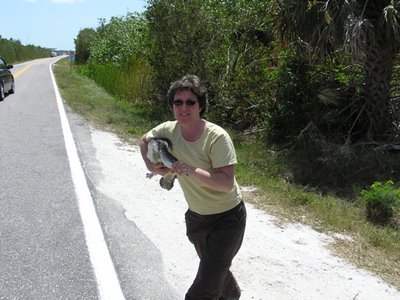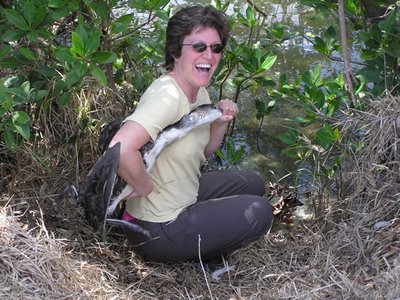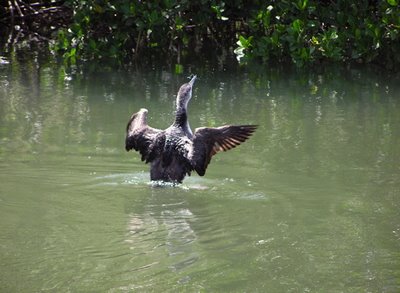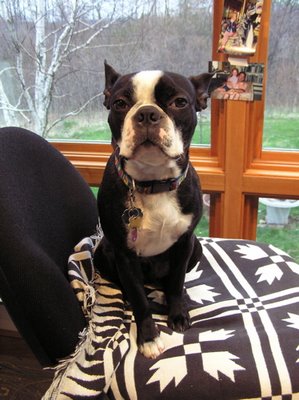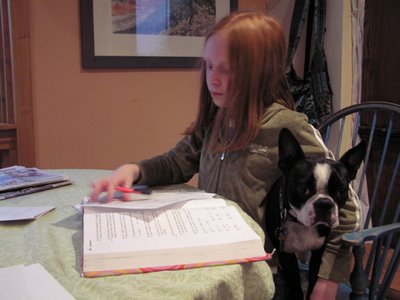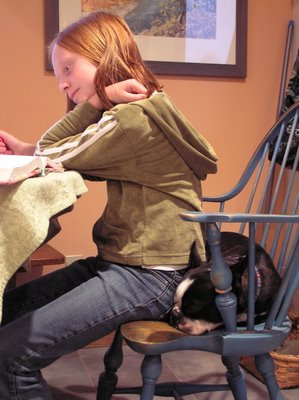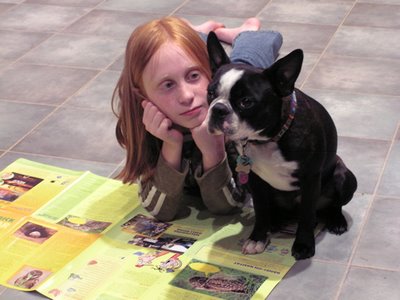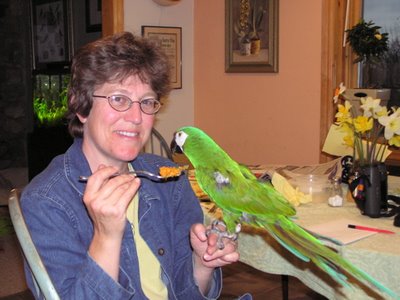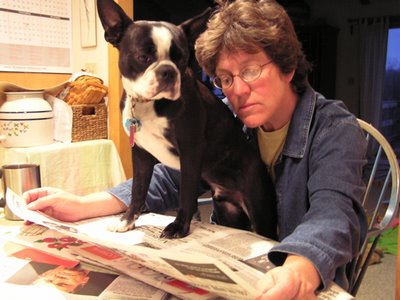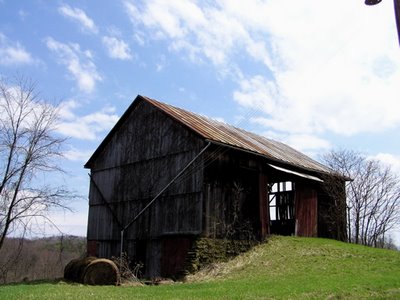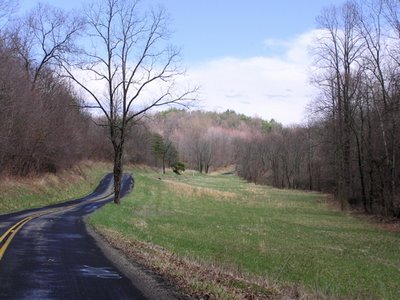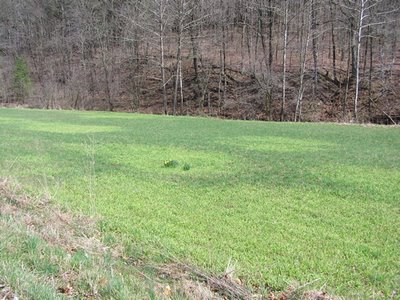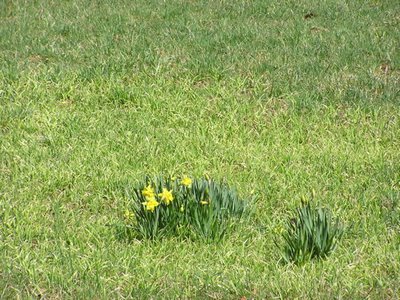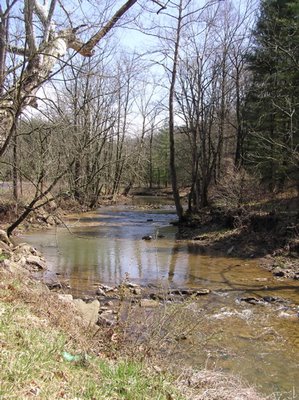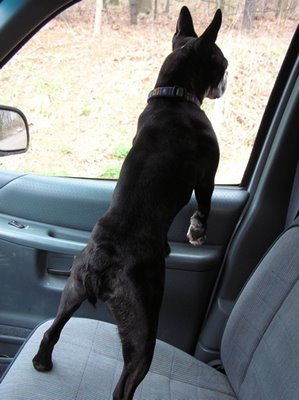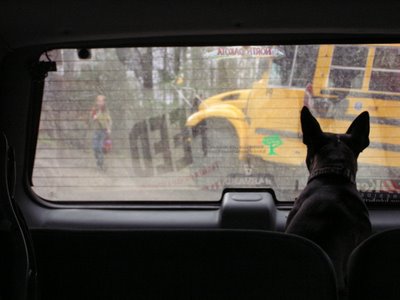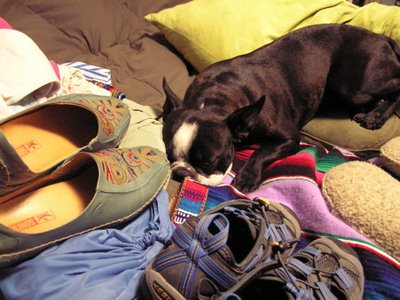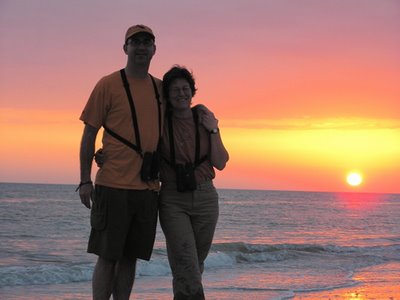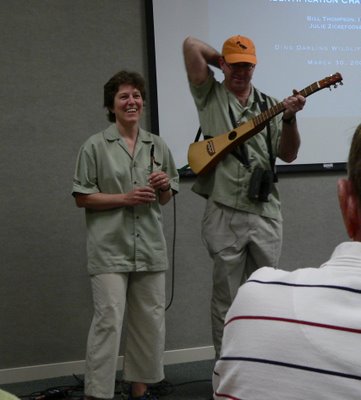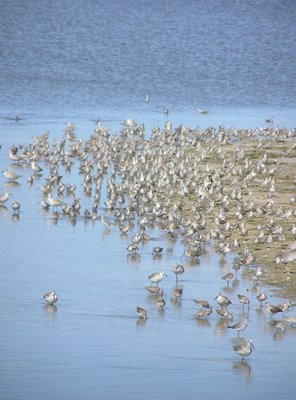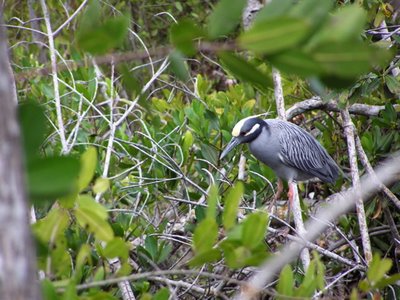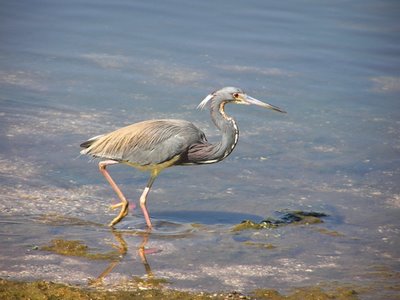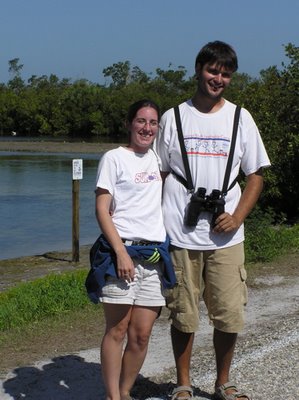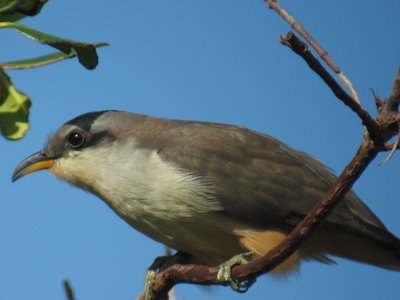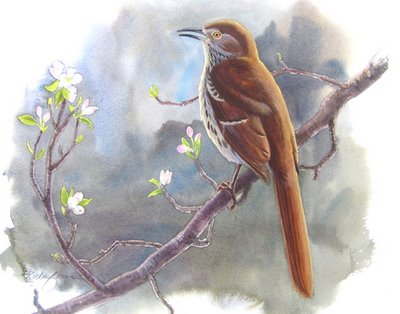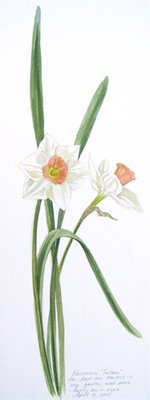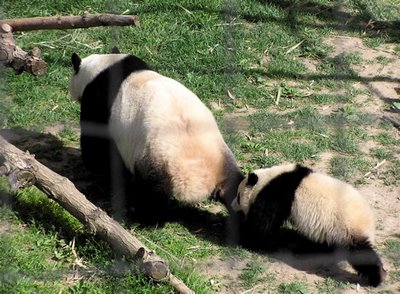
was 1974? I think that's about right. Anyway, I was a kid. We went up to see the first pandas to come to the National Zoo with my grandmother from Iowa and my mom and dad and sister Micky. I remember standing in line for a long time, then pressing myself up against glass to watch them amble around their grassy enclosure.
Liam and I were hoping to see the baby giant panda Tai Shan, but there was a line about forty people long, so we walked on by. Standing in line didn't figure in our day; we had three hours to do as much of the Zoo as we could, thanks to bumper-to-bumper traffic, technical difficulties setting up my talk for that evening, and a recalcitrant guard at the gate who told me the parking lots were all full, and I'd have to show a Smithsonian ID to get in. When I told him I was from Ohio, and I was going to speak there that evening, he said, "Well, you'll have to show me your Smithsonian ID." As if they issue one when they invite you over. So instead of starting our zoo adventure at 11, we started it at 1:30. They were all out of strollers, too, and that meant mutiny from Liam. I was reduced to following a tired-looking grandmother all the way up the hill to the stroller return station to make sure we'd get one. Liam, trudging red-faced and sullen, behind. Fun!
Our dear friends Howard and Marta Youth arrived to grease the skids; Howard worked for the Zoo for years and knew all the right people to summon.
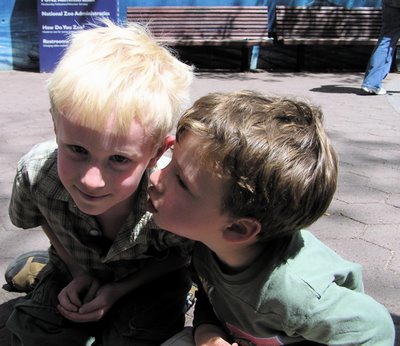
We got it all figured out, and their adorable little son Thomas gave Liam a couple of kisses.
Then we were off, zooming from exhibit to exhibit. I think our favorite was Amazonia. We stared agog at giant arapaima fish being fed chunks of herring and fruit.
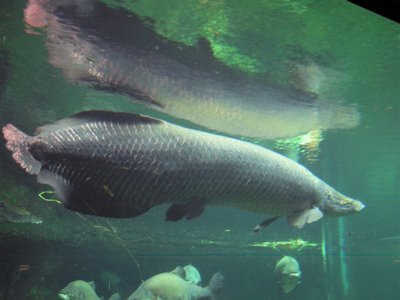
If I'm not mistaken, this is the same fish we called pirarucu in Manaus. I have eaten a lot of pirarucu, even filed my nails with their dried scales. They're being overfished into oblivion, like every other large fish in the world. These were about six to eight feet long, and utterly, prehistorically stunning.
Gorillas, giraffes, some orangutans who were playing with bedsheets in a most amusing way; glossy starlings and tawny frogmouths and gibbons...we flew through the zoo. Despite being pushed around like a pasha in his scooterbug, offered water and snacks and every comfort, Liam grew increasingly fretful. Our little Armageddon occurred when he refused to look at a baby gorilla, because it wasn't a train. That's when you know you have a problem. Liam got a ferocious, hissing lecture from Mommy, and his attitude improved. Stepping back from it, though, I realized that, while many kids around us were throwing screaming stomping flailing fits, I was bent in half just because my son averted his eyes from something wonderful that I wanted him to see. Little stinker. He doesn't have to say a word. He knows how to push my buttons.
So we're coming back up the interminably long hill to the gate, and I remember hearing that sometimes you can see the pandas from the terrace of the Panda Cafe, so I exit stage left and there, miracle upon miracles, in the late afternoon sun, Tai Shan is ambushing his mama about twelve feet directly beneath us. He's hanging upside down from a forked log and biting her as she deliberately walks beneath his station.
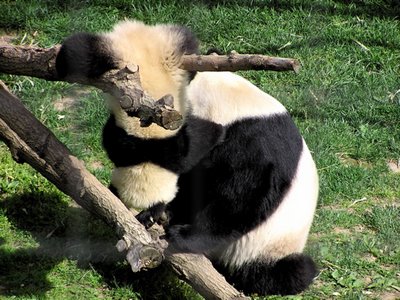
All bearlike creatures are cute, but pandas are flat-out adorable, and they are playful as all getout on top of looking like giant stuffed toys. I love how Mom casually puts herself in harm's way again and again.
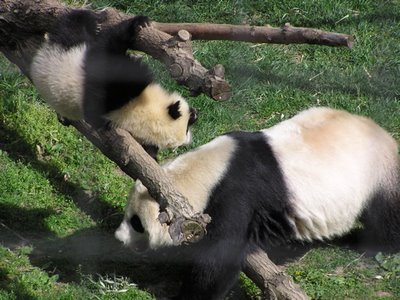
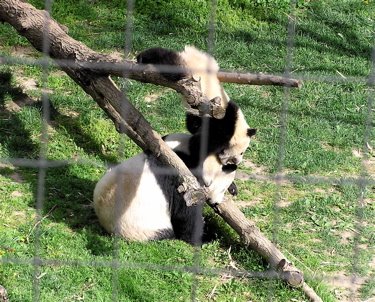
The little knot of people were all goo-goo over this little panda, and I was the worst offender. Pandas are pure magic. Awwww! Lookit that!
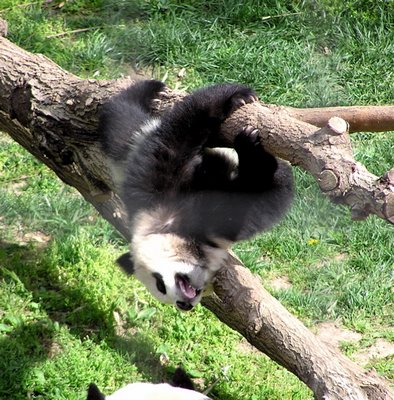
Liam was laughing out loud. It was the perfect end to a strenuous day. Well, almost the end...I had to give a talk that evening. I knew it would be rough to do the Zoo, get myself presentable, then give a talk, but I really had no other recourse. It worked out fine. I got to have dinner with my hero
Russ Greenberg, an ornithologist specializing in studying our rapidly declining Neotropical migrant birds. Russ realized that if he didn't do something quick we'd have nothing left to study. So he started the
Smithsonian Migratory Bird Center. I've been blessed to work with Russ on a number of occasions, illustrating SMBC's beautiful publications, and I hope to work with him for a long time to come. He's a mighty smart guy, and he sees the big picture like nobody's business.
It was a wonderful trip. Stumbling on the pandas was a metaphor for the whole journey. What a gift from above. These animals are doing good work for their Chinese brethren. Long may they live and reproduce.
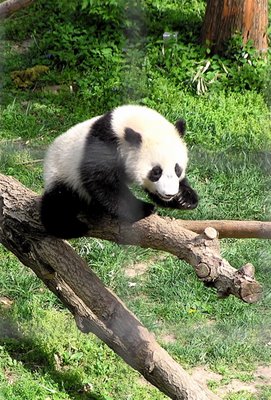

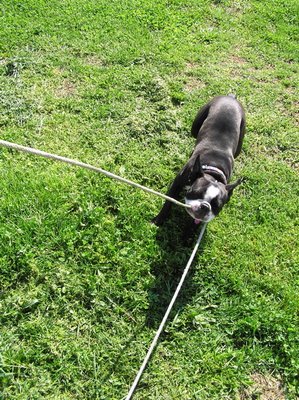 Baker helps too much. Here, he's pulling on the rope that raises and lowers our martin nesting gourds. Oh, thank you. That's a big help.
Baker helps too much. Here, he's pulling on the rope that raises and lowers our martin nesting gourds. Oh, thank you. That's a big help. Patrick Starfish held up for a long time, perhaps because it wasn't even meant to be a dog toy. But during American Idol Wednesday night, Baker got into his groin and eviscerated him most gruesomely.
Patrick Starfish held up for a long time, perhaps because it wasn't even meant to be a dog toy. But during American Idol Wednesday night, Baker got into his groin and eviscerated him most gruesomely. I finally threw the limp rag away tonight, but not before two more salvos of Hollofil, and one big Baker upchuck that consisted of Hollofil laced with Royal Canin dog chow. Bleeeeah.
I finally threw the limp rag away tonight, but not before two more salvos of Hollofil, and one big Baker upchuck that consisted of Hollofil laced with Royal Canin dog chow. Bleeeeah.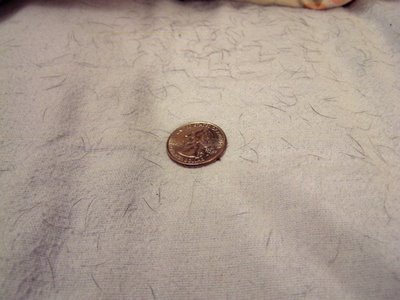 Is he worth it?
Is he worth it?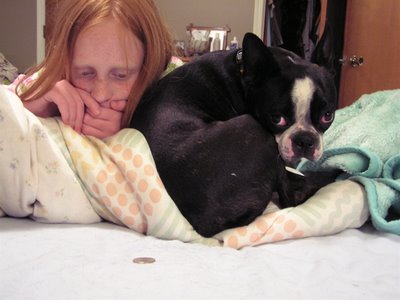 Hair? What hair? Is there a problem?
Hair? What hair? Is there a problem?





